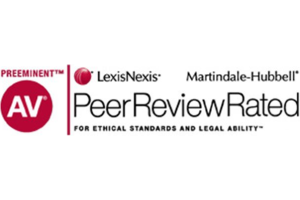- Free Consultation: (844) 268-7775 Tap Here to Call Us
Indiana Court of Appeals Finds Employee’s Dismissal Did Not Bar Plaintiff’s Case Against Employer Under Respondeat Superior
The Indiana Court of Appeals recently reversed a trial court’s grant of summary judgment for an assisted living facility reaffirming long-standing Indiana precedent that in injury lawsuits arising out of the negligence of employed individuals acting within the course and scope of their employment, the plaintiff can sue 1) the employee, 2) the employer, or 3) both the employee and employer.
In Hogan v. Magnolia Health Sys. 41, Mary Hogan (“Hogan”), and subsequently her Estate, sought damages for a personal injury that occurred when an employee of Magnolia Health Systems 41, LLC (“Magnolia”), which owned and/or operated Crown Pointe of Carmel, an assisted living facility, caused a buffet table to fall on Hogan’s walker causing Hogan to fall and hit her head. Hogan sued Magnolia, and, not knowing the name of the employee, “John Doe.” After later learning of the employee’s name, Hogan moved to amend her complaint to name the employee. However, because the amendment occurred more than two years after the incident, the employee filed a motion to dismiss based upon the statute of limitations, which the trial court granted. Magnolia then filed a motion for summary judgment arguing it could not be held vicariously liable for the employee’s actions under respondeat superior because Hogan’s claim against the employee was barred. After a hearing, the trial court granted Magnolia’s motion, and Hogan appealed.
The legal theory of respondeat superior imposes liability on employers for the wrongful conduct of employees committed within the course and scope of employment. To be within the course and scope of employment, the act must have been incidental to authorized conduct or in furtherance of the employer’s business to an appreciable extent. Thus, although an employer may not have committed any wrongful or negligent act itself, when an employee commits a negligent act in the course and scope of employment, the employer can be held liable for the employee’s negligence. However, no liability applies under respondeat superior if the employee was not negligent.
Here, Magnolia did not argue its employee was not negligent or that its employee was not acting within the course and scope of employment when the injury occurred. Rather, Magnolia argued that because the claim was barred against its employee, no claim could be pursued against it based upon the employee’s conduct. Magnolia cited Indiana cases supporting the proposition that when an employee cannot be held liable, no action based solely upon respondeat superior can be maintained against the employer. However, while it is true that if an employee is not negligent and therefore not liable, an employer cannot therefore be found liable, Indiana jurisprudence does not support the proposition that an employee has to be named as a defendant and judgment entered against the employee in order to hold the employer liable. Rather, the employee’s liability is imputed to the employer arising out of the employment relationship. Thus, plaintiffs have the option to sue the employee, employer, or both arising out of the wrongful and injurious conduct committed by an employee while in the course and scope of employment with an employer.
The employee’s dismissal from this case did not bar Hogan’s claim against Magnolia. While Hogan’s claim against Magnolia’s employee was barred by the statute of limitations, she sued Magnolia within the statute of limitations and could, therefore, move forward with her claim against Magnolia to hold it liable for its employee’s negligent conduct in causing Hogan to fall and suffer personal injuries. The Court therefore found a material issue of fact existed as to whether the employee was negligent, and Magnolia was not entitled to judgment as a matter of law. The Court reversed the trial court’s judgment and remanded the case for further proceedings.
This is a helpful case for plaintiffs, many of whom would otherwise be forced to deal with the often times very difficult and time-sensitive task of identifying and suing all individual employees who may bear some fault for causing injuries. It is also a helpful case for individual employees, who in some cases will be able to avoid being sued since their employer can be pursued alone. However, as our previous blog noted, the issue of employment and agency can be a tricky one to pin down.
You can read the full opinion here.














